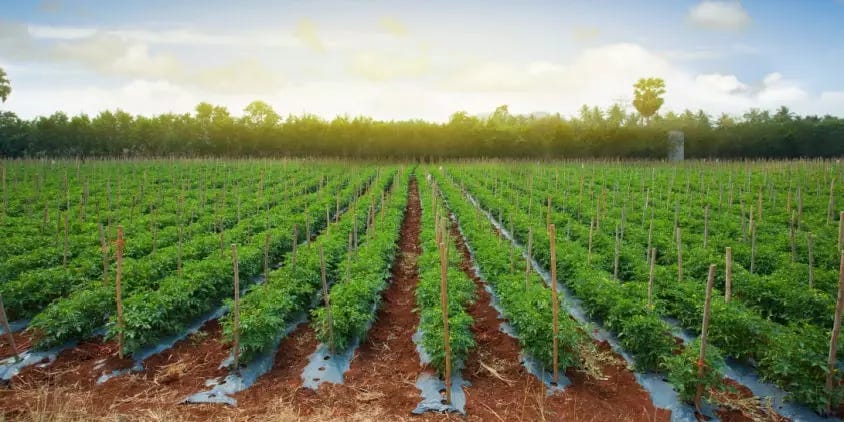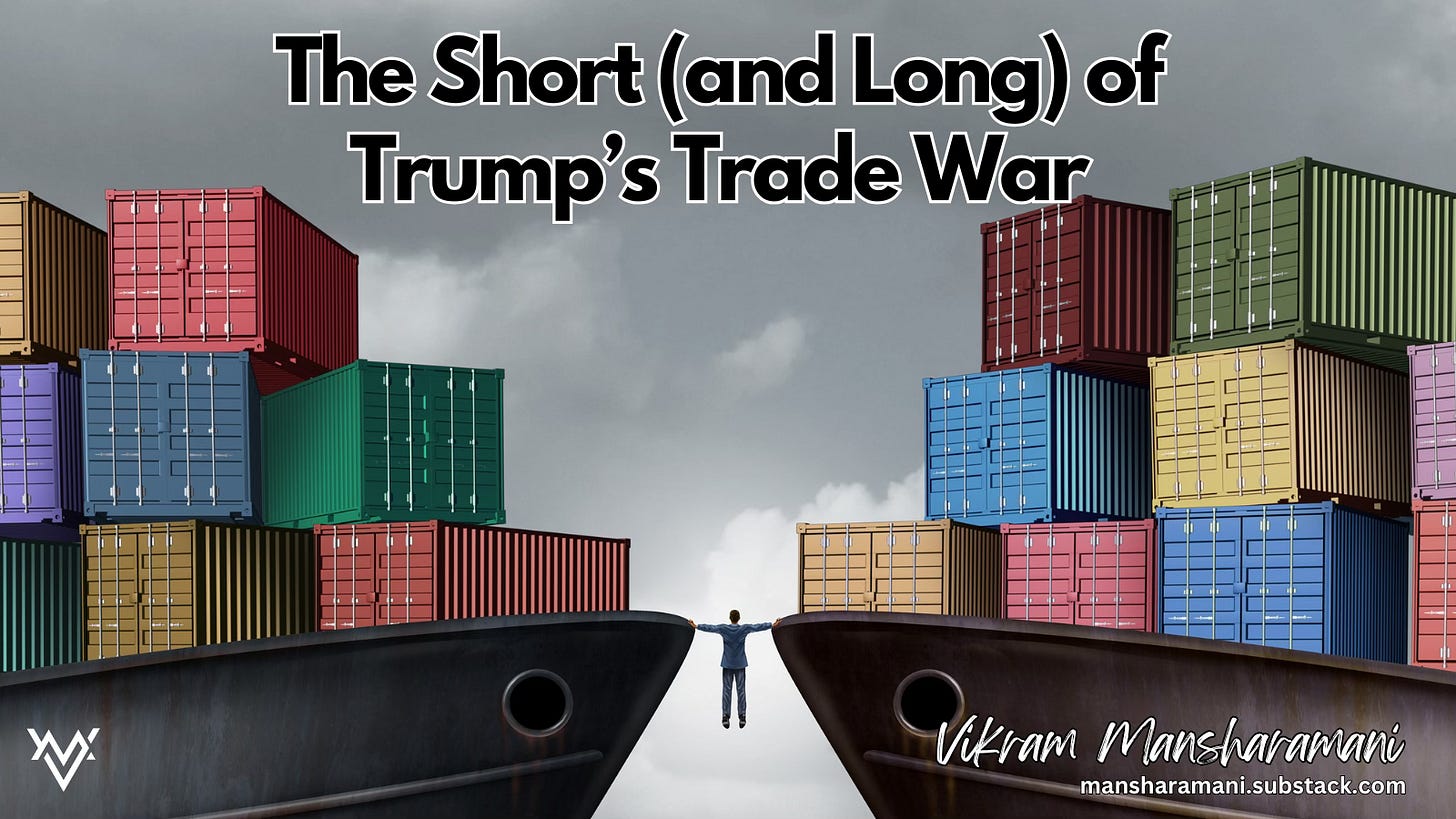The Short (and Long) of Trump's Trade War
How tomatoes illustrate the potential costs and benefits of tariffs
As the global trade war continues unabated, each new day brings headlines sounding the alarm over its impact. Deciphering how various policies could impact specific industries is no trivial task and requires thinking about developments through multiples perspectives across various geographies and timelines.
And as we’re all aware, there is a long list of products that are being impacted, crucial items such as pharmaceuticals, rare earths, energy, technology, and…tomatoes. Yes, tomatoes. This might not be on the top of your list, but it is certainly at the top of mine. As I have recently written, I run a frozen pizza manufacturing company, and tomatoes - used for sauce - are one of our most vital ingredients. And while it is probably not the sexiest topic to cover when discussing the impacts of the trade war, it is still illustrative of the trade dynamics driving the debate and buffeting the global economy.
Practicing What I Preach
For years, I’ve suggested that the best way to navigate uncertainty is to integrate thinking by crossing silos and connecting dots. I’ve often described this method as the “generalist approach” becau…
Americans primarily get their tomatoes from two places: California and Mexico. California is the largest domestic source of tomatoes in the U.S., and over 90% of America’s processed tomatoes comes from the state. In 2023, the state produced over 11 million tons of tomatoes.
Mexico is the largest foreign supplier of tomatoes to the U.S., accounting for 90% of our tomato imports. This is especially important in the off-season in the U.S., when the U.S. increases its buying of tomatoes from Mexico, where tomatoes can be grown year-round.
Americans primarily get their tomatoes from two places: California and Mexico.
As you would expect, it is cheaper to grow tomatoes in Mexico; this is for any number of reasons, but chief among them is labor costs. According to a University of Florida study, farmworkers in Mexico earned $1.20 per hour versus a much higher $14.11 in the U.S. These higher costs result in U.S. tomatoes costing somewhere between $.90-$1.80 per pound, whereas Mexican tomatoes cost around $.41 per pound.
As a result, not surprisingly, 70% of the tomatoes bought in the U.S. are from Mexico.
But the trade war is changing all of that. The U.S. Department of Commerce has imposed a nearly 21% tariff on Mexican tomatoes, which is expected to go into effect in July. This has already had an impact in Mexico, which is seeing declining exports and job losses. And while this first order effect is clear and obvious, it’s the next link in the chain of global interconnectedness that illustrates how it might impact Americans.

If Mexican tomato prices rise, demand for Mexican tomatoes will fall. Assuming no shift in consumer preferences, this will (on the margin) lead to higher demand for American tomatoes. In the short-run, this likely means paying more for salsa, salads, and yes, tomato sauce, leading some analysts to sound alarm bells over what could be additional inflation pressures for the American consumer.
Which brings me back to Goodwell Foods, the company I currently run. We make millions of pizzas a year – sold in major retailers throughout the U.S. – and we need tomatoes for our sauce. But here’s the wrinkle. In the U.S., tomatoes are primarily used for three things: ketchup, salsa, and sauce. The tomatoes used for salsa come mostly from Mexico, whereas those used for sauce come primarily from California. So, while salsa-makers are going to have problems, pizza companies like mine should be fine, right?
Not so fast. If salsa-makers can’t get enough tomatoes from Mexico, they’re going to have to get them from somewhere else. California will be the first place they look, and the increased demand is going to increase prices.
Even though I don’t use tomatoes from Mexico, my costs will still increase, and if the tomatoes that are used in our sauce are more expensive, then our product is going to be more expensive. We pride ourselves on being able to feed a family of four for only a few dollars – no small feat in these inflationary times – but that will be harder for us to do if the cost of our ingredients goes up. And if we sell fewer pizzas as a result, then we won’t have to employ as many people, we’ll hire fewer truck drivers to move our products, and the ripple will flow through to less economic activity. That means less pay for workers, who will be squeezed with less money and higher costs.
The pain we’re almost certain to feel in the short run is real. We need to expect a slower economy (even if only temporarily) as uncertainty and higher costs paralyze decision-makers and decrease activity. The long-run story, however, could be different. Let’s consider a possible future.
Higher tomato prices in America will spur California (and other) farmers to grow more, leading to an increase in domestic production. All else equal, additional supply will lower prices – but with the very important long-term impact of reducing our imports. And while the price impact is unclear, it’s probably not going to be as high as the tariffs suggest and may even lead to lower prices.

This is of course part of the motivation behind the trade war…and the tariffs have the potential to help lots of industries…and ultimately, American consumers. By raising the cost of imports, tariffs can stimulate more domestic production, reduce our trade deficits, and create jobs for American workers. And while this outcome is far from certain, it’s important to highlight it’s a very real possibility.
Amidst all the gloom and doom of today’s trade war, is it conceivable there’s a bright future ahead? I’ve often advised the best way to navigate uncertainty is by thinking of various potential futures, and with the disproportionate focus these days on the costs, it’s worth at least considering the benefits. So what will happen? Only time will tell, but in the meantime, one thing remains certain: something as seemingly trivial as tomatoes can have a big impact on a small business in a small town in a small state.
VIKRAM MANSHARAMANI is an entrepreneur, consultant, scholar, neighbor, husband, father, volunteer, and professional generalist who thinks in multiple-dimensions and looks beyond the short-term. Self-taught to think around corners and connect original dots, he spends his time speaking with global leaders in business, government, academia, and journalism. He’s currently the Chairman and CEO of Goodwell Foods, a manufacturer of private label frozen pizza. LinkedIn has twice listed him as its #1 Top Voice in Money & Finance, and Worth profiled him as one of the 100 Most Powerful People in Global Finance. Vikram earned a PhD From MIT, has taught at Yale and Harvard, and is the author of three books, The Making of a Generalist: An Independent Thinker Finds Unconventional Success in an Uncertain World, Think for Yourself: Restoring Common Sense in an Age of Experts and Artificial Intelligence and Boombustology: Spotting Financial Bubbles Before They Burst. Vikram lives in Lincoln, New Hampshire with his wife and two children, where they can usually be found hiking or skiing.






